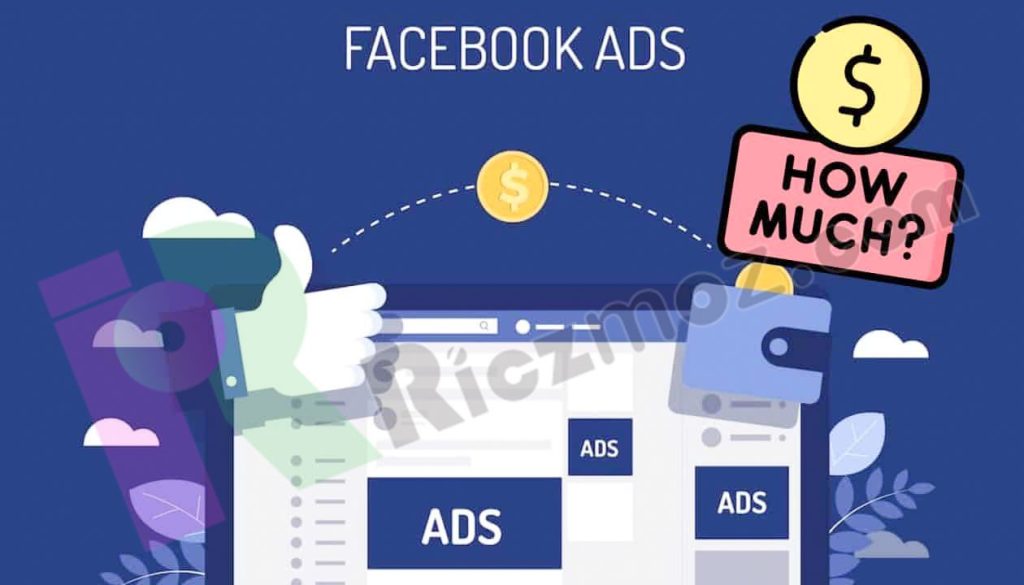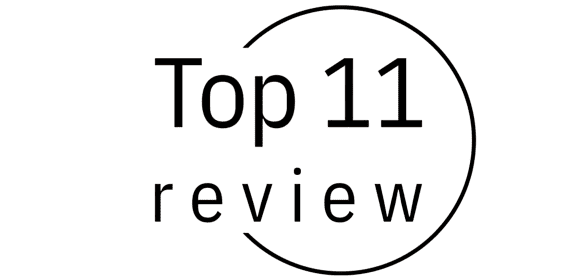This blog post will delve into the intricacies of estimating Facebook advertising costs. Understanding how the platform calculates your expenses and the variables influencing these costs is crucial for making informed decisions in your marketing endeavors. I’ll dissect the components of Facebook ad costs and furnish you with the latest and most comprehensive data available on average advertising costs. Armed with this knowledge, you can strategize effectively for your next campaign.
How does the Facebook ad auction function?
Facebook Ads operates on a pay-per-click (PPC) model, where the ads displayed on Facebook result from a competitive bidding process known as the “ad auction.” This auction occurs when advertisers bid for exposure to a specific target audience.
Advertisers vie for ad placement during the ad auction by submitting bids based on their campaign budget or customer acquisition costs. These bids are then evaluated alongside other factors, including the targeted audience and the advertisement’s quality.

The higher the bid from an advertiser, the greater the likelihood of their ad appearing on their intended audience’s news feed or sidebar. Additionally, advertisers may enjoy a lower cost-per-click (CPC) if their ad demonstrates higher quality and relevance. Facebook incentivizes advertisers who create ads that enhance the user experience by rewarding them with better placement.
Facebook Ads offers optimization options, such as automatic bidding, which adjusts bids automatically to improve campaign performance. This automated feature focuses on ad sets performing well, ensuring advertisers maximize campaign results.
Understanding the mechanics of Facebook Ads empowers advertisers to craft compelling ad campaigns that resonate with their target audience. Leveraging Facebook’s robust auction system, advertisers can effectively connect with potential customers and drive conversions.
How much do Facebook Ads cost?

Facebook charges advertisers based on various metrics, including cost per click (CPC), cost per mile (CPM), and cost per lead (CPL). CPC represents the expense for each click an ad garners, CPM signifies the cost per thousand impressions an ad receives, and CPL denotes the cost for each lead generated via Facebook Ads.
Typically, campaigns with larger advertising budgets tend to yield greater effectiveness. This is because they can access broader features and options, enabling them to optimize their campaigns and attain more significant traction.
Average CPC for Facebook Ads
How much are Facebook ads? The average CPC for Facebook Ads typically hovers around $1, although this figure can vary depending on several factors. In general, you can anticipate spending approximately $0.94 per click or between $12.07 and $14 for every 1,000 impressions your Facebook Ads receive.
From a business standpoint, here’s what this means:
Suppose you’re marketing a product priced at $50, with a conversion rate averaging 2.5% to 3% (typical for eCommerce scenarios). You’d need to attract 33 to 40 clicks to secure one sale.
The average CPC of $1 translates to a budget requirement of at least $33. Consequently, the remaining $17 would represent your profit margin.
However, if your product’s price falls below $33, adjusting your advertising strategy to achieve a CPC below $1 becomes necessary. This adjustment can be accomplished through various tactics, such as retargeting or conducting A/B testing to refine your approach further.
Average CPM for Facebook Ads
If you prefer to pay based on the number of impressions, it’s important to note that the average cost per thousand impressions (CPM) for Facebook Ads in a specific country like Australia is approximately $14. Similar to CPC, CPM is influenced by various factors, as we’ll delve into below.
In practical terms, suppose you’re running a branding campaign to reach 500,000 individuals. At an average CPM of $14, your budget requirement would amount to $7,000.
Average cost per lead
The average Cost per Lead (CPL) within Facebook Ads typically falls around $5. However, it’s essential to consider that not all leads generated will convert into sales. Therefore, it’s crucial to factor in your average conversion rate, representing the percentage of leads that ultimately become paying customers.
The nature of the lead you’re seeking to generate significantly impacts the CPL. For instance, acquiring leads for a free trial or a demo request may incur higher costs than obtaining newsletter subscriptions. Factors such as your industry and the targeting options available on Facebook will also influence your CPL.
What determines your Facebook ad cost?
Facebook’s advertising algorithm orchestrates an ad auction to determine the winning advertiser for a particular spot. Each advertiser vying for attention submits their campaigns, competing for specific ad placements tailored to their target audience. For instance, if two beauty brands aim to reach millennial women in the news feed, they enter the auction together.
Price isn’t the sole determinant of the auction’s outcome. Facebook assesses an ad’s overall value, considering how much the target audience would engage with or appreciate the ad. The algorithm evaluates factors like ad quality, which includes past feedback, and estimated action rates, predicting how many individuals will interact with the ad through likes, shares, or comments. The campaign that excels in these aspects emerges as the highest-value contender and secures the ad space.

Moreover, regardless of the auction dynamics, Facebook ad costs fluctuate yearly. The level of competition in an auction directly impacts your ad expenses—the more advertisers participating, the higher the costs. Industries such as finance, insurance, and home improvement typically experience elevated ad costs due to heightened competition.
Seasonality further influences ad expenses. Ad costs tend to surge towards the end of the year, particularly during peak shopping periods like Black Friday and Christmas. The influx of online shoppers during these events leads to an increased presence of advertisers on the platform, intensifying competition in ad auctions.
9 ways to reduce your Facebook ad cost
Once Facebook proves to be a dependable source of new customers, adjusting digital marketing budgets can feel precarious. The last thing you want is to halt investments and risk losing coveted ad placements to competitors who recognize their value for your business.
Fortunately, making minor adjustments to your campaign can reduce advertising costs without compromising outcomes, yielding a higher return on investment. Here’s how to achieve it.
1. Opt for the Appropriate Campaign Objective
Selecting the right campaign objective is paramount to optimizing your ad spend. For instance, if you’re promoting beauty products for women and aiming for bottom-of-the-funnel results, opting for the reach objective might not yield the desired sales outcomes. Instead, prioritize more targeted objectives like conversions. This enables Facebook’s automated bidding system to allocate your advertising budget more effectively, ensuring better results.
2. Refine Your Audience Targeting
Narrowing your audience reduces competition and decreases Cost per Click (CPC). Utilize the Audience Insights section in the Ads Manager to delve into detailed targeting options. For example, if your business sells beauty products for women, tailor your ads to specific groups based on factors like age, interests, and browsing history. This approach proves more efficient than broad targeting, contributing to improved campaign performance.
3. Manage Ad Frequency
Combat ad fatigue by lowering your ad frequency score. When ads repeatedly appear in the same format, user engagement declines. Refresh your ads regularly and experiment with different designs and placements to maintain a high Click-Through Rate (CTR) and prevent ad exhaustion.

4. Conduct A/B Testing
A/B testing is instrumental in optimizing advertising campaigns. Compare different ad versions to identify what resonates best with your audience. Modify one variable at a time—ad copy, creative elements, placement, or bidding strategy—to discern which factors influence campaign performance and maximize effectiveness.
5. Ensure Relevance
Relevance is paramount in advertising. Irrelevant ads not only diminish Click-Through Rates but also inflate ad costs due to lower relevance scores. Craft ads that align with your target audience’s interests and preferences to enhance engagement and drive meaningful interactions.
6. Implement Retargeting Campaigns
Retargeting campaigns re-engage users who have previously interacted with your business. Target individuals who have visited your website, engaged with your social media content, or expressed interest in your products or services. Retargeting fosters conversions from users already familiar with your brand, resulting in more cost-effective advertising outcomes.
7. Enhance Post-Click Experience
Optimize the post-click experience to maximize conversion rates. Ensure your website or landing page is fast-loading and well-designed to retain user interest and facilitate seamless navigation. A positive user experience from click to purchase enhances campaign effectiveness and reduces ad costs.
8. Consider Hiring a Facebook Ads Agency
Navigating the complexities of Facebook advertising can be daunting. Engage the expertise of a reputable Facebook Ads agency to streamline your campaigns and maximize ROI. Experienced professionals possess the knowledge and insights to optimize ad performance while minimizing costs, ensuring your advertising endeavors yield optimal results.
9. Utilize Lookalike Audiences
Leverage Facebook’s lookalike audiences feature to connect with individuals who resemble your existing customers. Facebook achieves this by analyzing a subset of your customer base, such as those who have completed a purchase, and identifying similar audiences that match these characteristics.
Lookalike audiences serve as an effective tool for expanding your reach and enhancing brand visibility. By targeting individuals who share similarities with your current customer base, you can efficiently locate high-quality leads at a reduced cost, requiring minimal optimization efforts.
Conclusion
How much Facebook ads cost in Australia and other countries underscores their seasonal and objective changes. With users spanning diverse demographics, interests, and geographies, the platform is a prime avenue for introducing products through news feed advertisements.
By experimenting with various campaigns and creatives, businesses can uncover winning strategies that align with their specific objectives and target audience. Continuously benchmarking these efforts against Facebook advertising cost averages facilitates the discovery of cost-effective formulas tailored to maximize results.
Read more about Facebook resources here.

Related posts: